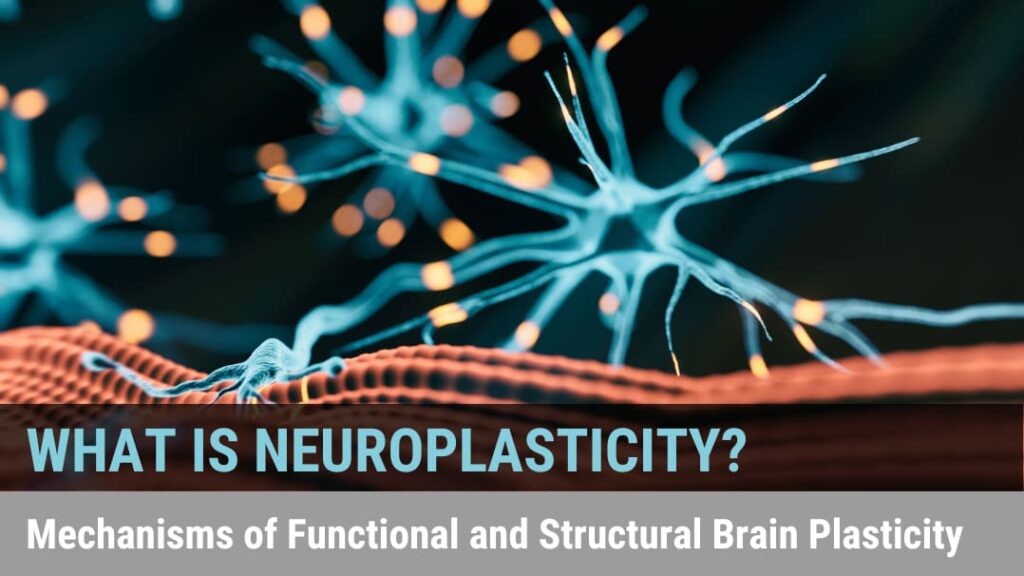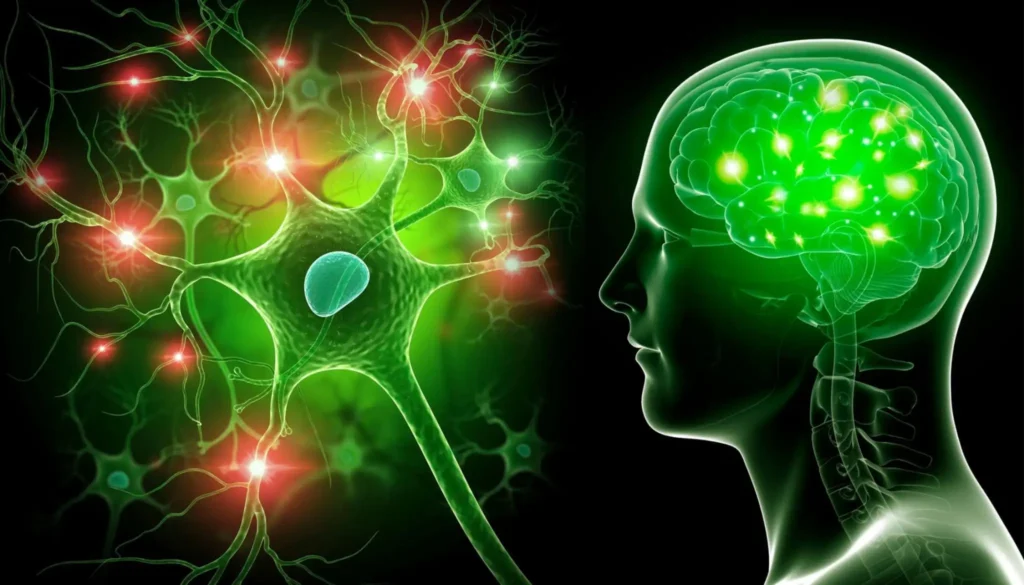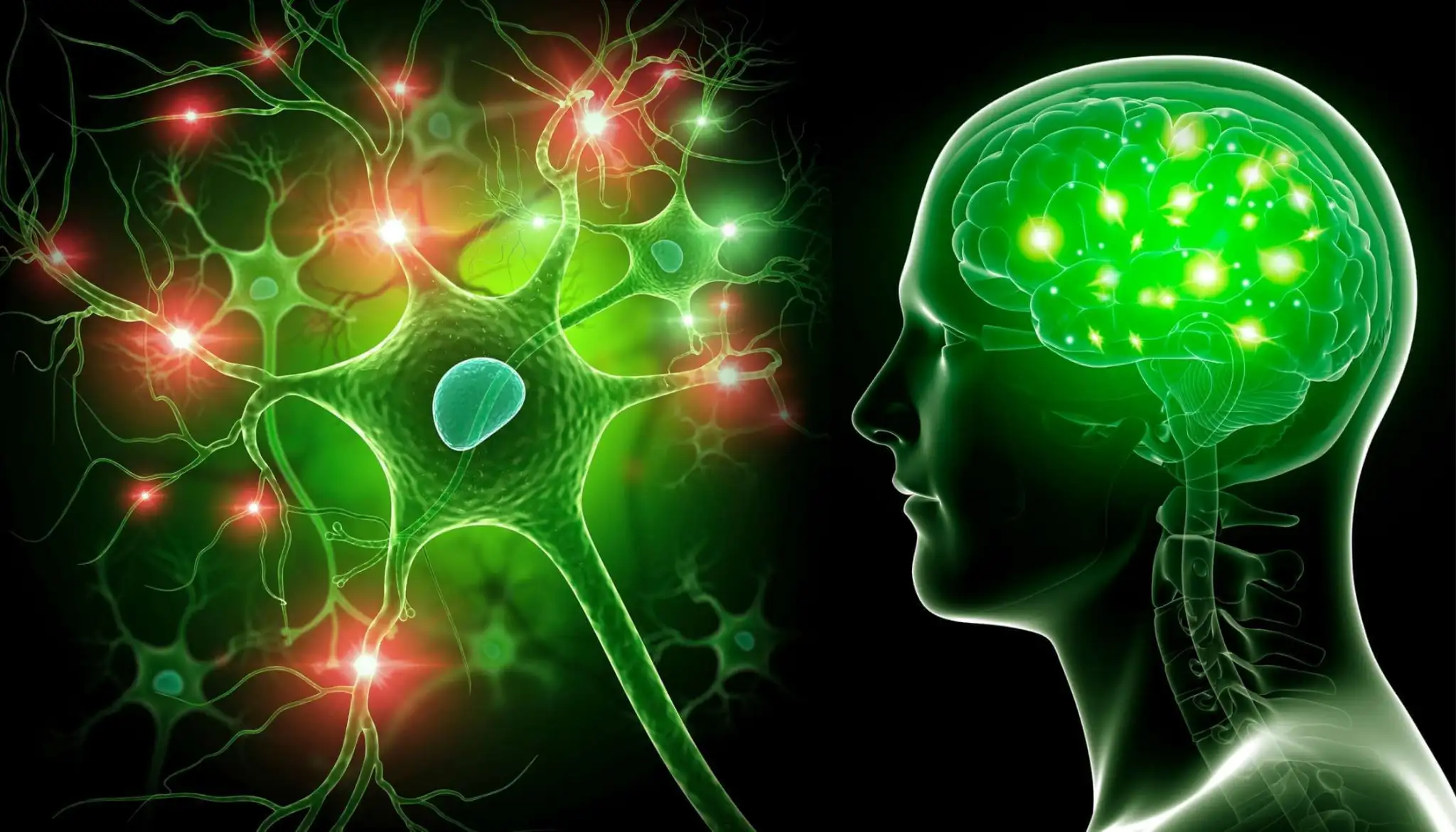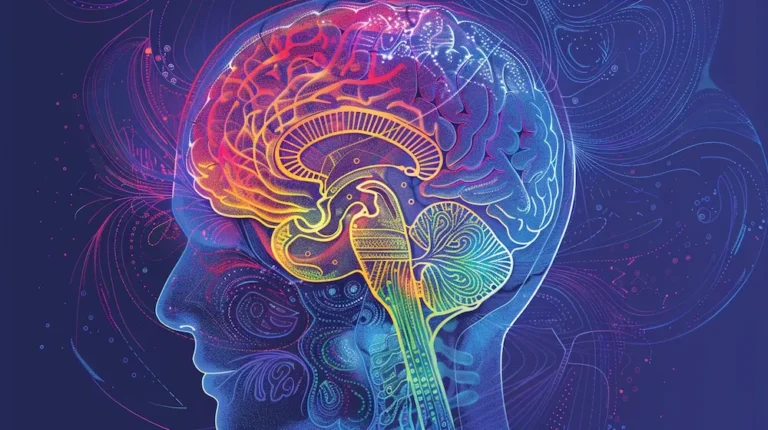Introduction
Neuroplasticity, often referred to as brain plasticity, is the brain’s remarkable ability to reorganize itself by forming new neural connections throughout life. This dynamic process allows the brain to adapt to new experiences, learn new information, recover from injuries, and compensate for lost functions.
Understanding neuroplasticity is crucial for unlocking the potential for cognitive enhancement, rehabilitation from brain injuries, and the treatment of various neurological and psychiatric disorders. This article explores the mechanisms, types, benefits, and implications of neuroplasticity, highlighting its significance in mental health and overall brain function.
As we delve into the fascinating world of neuroplasticity, we will uncover how this phenomenon shapes our learning, memory, and recovery processes, offering hope and strategies for individuals facing cognitive challenges.
Enhance Neuroplasticity and stay sharp with our Trivia game generator or Fun Facts game for you mental exercises and mental sharpness!
What is Neuroplasticity?

Definition and Overview
Neuroplasticity is defined as the brain’s ability to change and adapt in response to experience, learning, and environmental factors. It encompasses a wide range of processes, including the strengthening or weakening of synapses, the growth of new neurons (neurogenesis), and the reorganization of neural pathways. Neuroplasticity is a lifelong process, although it is most pronounced during critical periods of development, such as childhood and adolescence.
Historical Context
The concept of neuroplasticity has evolved significantly over the years. Initially, the brain was thought to be a static organ, with a fixed number of neurons formed during early development. However, groundbreaking research in the late 20th century revealed that the brain is capable of change throughout life.
Studies using advanced imaging techniques, such as functional MRI (fMRI) and positron emission tomography (PET), have provided evidence of neuroplasticity in action, demonstrating how the brain adapts to learning, injury, and recovery.
Types of Neuroplasticity
Neuroplasticity can be categorized into several types, each reflecting different mechanisms and processes:
1. Structural Plasticity
Structural plasticity refers to the brain’s ability to physically change its structure in response to learning and experience. This includes the growth of new neurons (neurogenesis) and the formation of new synapses (synaptogenesis).
Structural plasticity is particularly prominent in areas of the brain associated with learning and memory, such as the hippocampus.
Key Points:
- Neurogenesis occurs primarily in the hippocampus and is influenced by factors such as exercise, stress, and environmental enrichment.
- Structural changes can enhance cognitive abilities and improve memory retention.
2. Functional Plasticity
Functional plasticity involves the brain’s ability to reorganize and adapt its functions in response to changes in the environment or injury. This type of plasticity allows different brain regions to take over functions that were previously managed by damaged areas.Key Points:
- After a brain injury, such as a stroke, other regions of the brain may compensate for lost functions, allowing individuals to regain abilities.
- Functional plasticity is essential for rehabilitation and recovery following neurological events.
3. Developmental Plasticity
Developmental plasticity occurs during critical periods of brain development, particularly in childhood and adolescence. During these stages, the brain is highly adaptable, forming and pruning neural connections based on experiences and environmental influences.Key Points:
- Early experiences, such as language acquisition and social interactions, play a crucial role in shaping brain development.
- Developmental plasticity sets the foundation for lifelong learning and cognitive abilities.
4. Compensatory Plasticity
Compensatory plasticity refers to the brain’s ability to adapt to changes or deficits by reorganizing its neural networks. This can occur in response to sensory loss, such as blindness or hearing impairment, where other senses may become heightened.Key Points:
- Individuals who lose their sight may experience enhanced auditory or tactile processing as the brain reallocates resources.
- Compensatory plasticity demonstrates the brain’s remarkable ability to adapt to new circumstances.
Mechanisms of Neuroplasticity

Neuroplasticity is driven by various cellular and molecular mechanisms that facilitate changes in the brain. Key mechanisms include:
1. Synaptic Plasticity
Synaptic plasticity is the process by which synapses strengthen or weaken over time, influencing the efficiency of communication between neurons. Two primary forms of synaptic plasticity are:
- Long-Term Potentiation (LTP): The strengthening of synapses based on recent patterns of activity. LTP is thought to be a cellular mechanism underlying learning and memory.
- Long-Term Depression (LTD): The weakening of synapses, which can occur when neurons are not used frequently. LTD is important for refining neural circuits and eliminating unnecessary connections.
2. Neurogenesis
Neurogenesis is the process of generating new neurons from neural stem cells. While it was once believed that neurogenesis only occurs during development, research has shown that it can continue into adulthood, particularly in the hippocampus.Factors Influencing Neurogenesis:
- Exercise: Physical activity has been shown to promote neurogenesis and enhance cognitive function.
- Stress: Chronic stress can inhibit neurogenesis, highlighting the importance of stress management for brain health.
- Enriched Environments: Stimulating environments that provide opportunities for learning and social interaction can enhance neurogenesis.
3. Brain-Derived Neurotrophic Factor (BDNF)
Brain-Derived Neurotrophic Factor (BDNF) is a protein that plays a critical role in promoting the survival, growth, and differentiation of neurons. BDNF is essential for synaptic plasticity and neurogenesis, making it a key player in learning and memory processes.Importance of BDNF:
- Higher levels of BDNF are associated with improved cognitive function and resilience against stress.
- Lifestyle factors such as exercise, nutrition, and mental stimulation can increase BDNF levels in the brain.
Benefits of Neuroplasticity

Understanding and harnessing neuroplasticity can lead to numerous benefits, including:
1. Enhanced Learning and Memory
Neuroplasticity allows individuals to adapt and learn new information throughout their lives.
By engaging in activities that promote neuroplasticity, such as learning a new language or skill, individuals can enhance their cognitive abilities and improve memory retention.
2. Recovery from Brain Injury
Neuroplasticity plays a crucial role in recovery from brain injuries, such as strokes or traumatic brain injuries. Rehabilitation programs that leverage neuroplasticity can help individuals regain lost functions and improve their quality of life.
3. Treatment of Mental Health Disorders
Neuroplasticity is fundamental to various therapeutic approaches for mental health disorders. Techniques such as cognitive-behavioral therapy (CBT) and mindfulness-based interventions can promote positive changes in brain structure and function, leading to improved mental health outcomes.
4. Aging and Cognitive Resilience
Engaging in activities that promote neuroplasticity can help combat age-related cognitive decline. Lifelong learning, physical exercise, and social engagement can contribute to cognitive resilience, allowing individuals to maintain their mental acuity as they age.
5. Enhanced Emotional Regulation
Neuroplasticity can improve emotional regulation by promoting adaptive neural pathways and reducing maladaptive ones. This is particularly relevant in the treatment of anxiety and mood disorders, where therapeutic interventions can reshape emotional responses.
Practical Strategies to Promote Neuroplasticity
To harness the power of neuroplasticity, individuals can incorporate various strategies into their daily routines:
1. Engage in Lifelong Learning
See our Shop for more brain games!



Continuously challenging the brain through learning new skills, languages, or hobbies can promote neuroplasticity. Consider enrolling in classes, attending workshops, or pursuing online courses to stimulate cognitive growth.
2. Practice Mindfulness and Meditation
Mindfulness practices and meditation can enhance focus, reduce stress, and promote emotional well-being. Regular mindfulness practice has been associated with structural changes in the brain, including increased gray matter density in areas related to memory and emotional regulation.
3. Stay Physically Active
Regular physical exercise is one of the most effective ways to promote neuroplasticity. Aim for at least 150 minutes of moderate aerobic activity each week, incorporating activities such as walking, running, swimming, or dancing.
4. Maintain a Balanced Diet
A diet rich in antioxidants, omega-3 fatty acids, and essential nutrients supports brain health and neuroplasticity. Foods such as fatty fish, berries, leafy greens, nuts, and seeds are particularly beneficial for cognitive function.
5. Foster Social Connections
Engaging in social activities and maintaining strong relationships can stimulate cognitive processes and promote emotional well-being. Join clubs, volunteer, or participate in group activities to enhance social interaction.
6. Get Adequate Sleep
Quality sleep is essential for memory consolidation and brain health. Aim for 7-9 hours of sleep each night, and establish a regular sleep routine to support optimal cognitive function.
7. Challenge Your Brain

Incorporate brain-training exercises, puzzles, and games into your daily routine to keep your mind sharp. Activities like Sudoku, crossword puzzles, and memory games can enhance cognitive function and promote neuroplasticity.
8. Limit Stress
Chronic stress can negatively impact neuroplasticity and cognitive function. Implement stress-reduction techniques such as deep breathing, yoga, or journaling to promote relaxation and mental clarity.
Conclusion
Neuroplasticity is a fascinating and essential aspect of brain function that allows for adaptation, learning, and recovery throughout life. By understanding the mechanisms and benefits of neuroplasticity, individuals can take proactive steps to enhance their cognitive abilities, improve mental health, and promote overall brain health.Incorporating strategies that promote neuroplasticity, such as lifelong learning, physical exercise, mindfulness practices, and healthy lifestyle choices, can lead to significant improvements in memory, cognitive function, and emotional well-being. As research continues to uncover the intricacies of neuroplasticity, we can look forward to new therapeutic approaches and interventions that harness the brain’s remarkable capacity for change and growth.By prioritizing neuroplasticity in our daily lives, we can unlock our full potential, enhance our cognitive resilience, and navigate the challenges of aging and mental health with confidence.
Frequently Asked Questions (FAQs)
What is neuroplasticity?
Neuroplasticity is the brain’s ability to reorganize itself by forming new neural connections throughout life, allowing for adaptation, learning, and recovery.
How does neuroplasticity work?
Neuroplasticity involves structural changes in the brain, such as the growth of new neurons and synapses, as well as functional changes in neural pathways that enhance cognitive abilities.
Can neuroplasticity occur at any age?
Yes, neuroplasticity can occur at any age, although it is most pronounced during critical periods of development. Lifelong learning and engagement in stimulating activities can promote neuroplasticity throughout life.
What are the benefits of promoting neuroplasticity?
Promoting neuroplasticity can enhance learning and memory, aid recovery from brain injuries, improve mental health outcomes, combat age-related cognitive decline, and enhance emotional regulation.
How can I promote neuroplasticity in my daily life?
You can promote neuroplasticity by engaging in lifelong learning, practicing mindfulness, staying physically active, maintaining a balanced diet, fostering social connections, getting adequate sleep, and challenging your brain with puzzles and games.
Is neuroplasticity relevant for mental health treatment?
Yes, neuroplasticity is fundamental to various therapeutic approaches for mental health disorders. Techniques such as cognitive-behavioral therapy (CBT) and mindfulness-based interventions leverage neuroplasticity to promote positive changes in brain function.
What role does exercise play in neuroplasticity?
Regular physical exercise increases blood flow to the brain, promotes the growth of new neurons, and enhances cognitive function, all of which contribute to improved neuroplasticity.
How does stress affect neuroplasticity?
Chronic stress can negatively impact neuroplasticity and cognitive function. Implementing stress-reduction techniques can help mitigate these effects and promote brain health.
Can diet influence neuroplasticity?
Yes, a balanced diet rich in nutrients supports brain health and neuroplasticity. Foods high in antioxidants, omega-3 fatty acids, and essential vitamins are particularly beneficial for cognitive function.
What are some effective brain-training exercises?

Effective brain-training exercises include puzzles, memory games, learning a new language, and engaging in activities that challenge your cognitive abilities.
References
- Kolb, B., & Gibb, R. (2011). Brain plasticity and behavior. Annual Review of Psychology, 62, 1-25. https://www.annualreviews.org/doi/abs/10.1146/annurev.psych.121208.131159
- Doidge, N. (2007). The Brain That Changes Itself: Stories of Personal Triumph from the Frontiers of Brain Science. Penguin Books.
- Cramer, S. C., & Bastings, J. (2019). Neuroplasticity and recovery after stroke. Nature Reviews Neurology, 15(1), 1-15. https://www.nature.com/articles/s41582-018-0094-7
- Hensch, T. K. (2005). Critical period plasticity in local cortical circuits. Nature Reviews Neuroscience, 6(11), 877-888. https://www.nature.com/articles/nrn1787
- Zatorre, R. J., Fields, R. D., & Johansen-Berg, H. (2012). Plasticity of the human brain: From the synapse to the system. Nature Reviews Neuroscience, 13(7), 494-506. https://www.nature.com/articles/nrn3245




